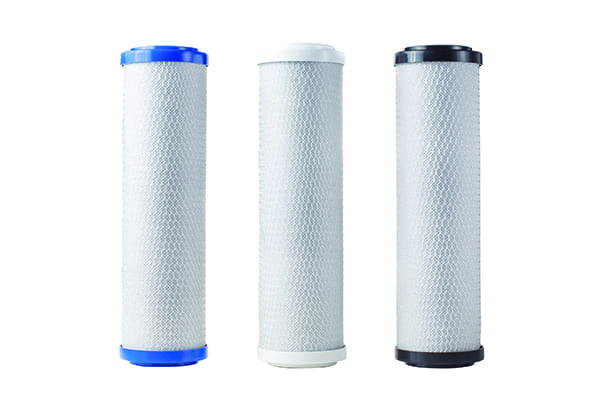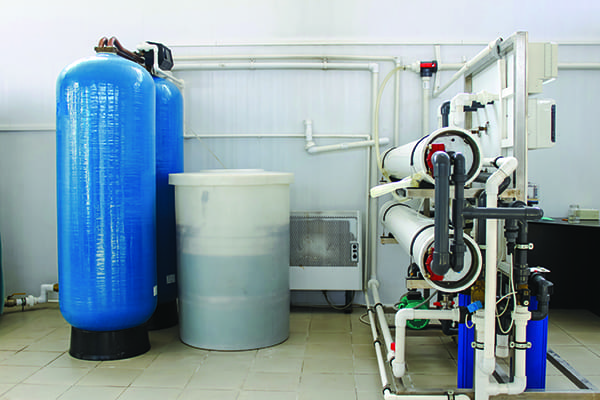Types of Filtration Systems Used for Wastewater Applications
The liquid filtration process is an important step in various applications that reuse water within systems. This article provides details on the types of filtration systems available and the benefits of each.
Liquid filtration is a process that removes particles and other media of a certain size and larger from liquids. Removing these particles and debris from a wastewater system allows the water to be reused within that system. This type of filtration process is important for a number of different reasons. Reusing the filtered water allows companies to reduce their overall waste, lower their water use, and diminish possible chemical consumption.
When it comes to industries such as the power sector, a considerable number of dissolved solids are typically found in discharged water. Within other systems, for example those in the paper industry, pulp left within wastewater can account for up to 1,000 ppm.
The filters used for wastewater filtration vary from system to system. This is necessary for a number of reasons. First, the condition of the water coming into the system can affect the type of filtration system required. Second, the required purity of the water to be reused after being filtered plays a role in the filter type needed. There are two primary types of filtration in wastewater treatment systems: particle filtration and membrane filtration.
Particle Filtration
Particle filtration is a system that separates solids from liquids using either physical or mechanical means. When it comes to wastewater treatment, particle filtration is commonly one of the first steps in the treatment of contaminated wastewater. This is because particle filtration is designed to remove solids measuring larger than one micron.
There are a number of different filters that can be used within particle filtration. A few options are available because certain aspects of the wastewater to be treated can vary greatly, depending on the system where the water is being used. The characteristics that most commonly affect filter choice include the density of particles, particle size, shape, quantity, and texture. Any other substances present within the water also affect the type of filter required for the system. Three common filter types for particle filtration are bag, cartridge, and self-cleaning filters.
Bag Filters. Bag filters are a great option for smaller applications and systems where minimizing waste is important. As the name suggests, bag filters are in the shape of an elongated bag. Wastewater goes into the bag, where the solid particles from the water are caught, allowing only clean water to flow through the bag’s pores to the other side.
Different sized particles can be caught depending on the system’s needs by using bags with different sized pores. Housings for this type of filter can vary, holding only one bag or multiple bags at the same time. Multi-bag filtration allows for a higher flow rate within the system.
Bag filters are an ideal option for those looking at cost-effective filtration, such as those in industries where the cost that accompanies self-cleaning filtration systems would not be appropriate. This design also accumulates less total waste than other filter systems. While bag filters are a great option for many, they do not have the same versatility as other filters, such as cartridge filters.
 |
|
1. Cartridge filters come in many different materials, shapes, and ratings. Some examples include pleated, melt-blown, string-wound, and membrane, with ratings from 100 micron to less than 1 micron. Courtesy: Commercial Filtration Supply |
Cartridge Filters. Utilizing pleated fabric or another type of screen, cartridge filters are a modular type of filter (Figure 1), meant to trap particles and even chemicals through the filtration process. Cartridge filters are typically separated into two categories: surface filters and depth filters. Surface filters retain particles on the surface of the liquid, while depth cartridge filters use a thick media, meant to create a twisted path that retains particles. Cartridge filters are considered to be very versatile and are used in a wide number of applications.
Self-Cleaning Filters. Commonly considered one of the most useful aspects of these filters, their ability to clean themselves sets them apart from other filters. Highly demanded and able to be customized with a number of different sizes and materials, self-cleaning filters are ideal within systems that cannot be shut down for cleaning purposes. Self-cleaning filters typically utilize backwashing or mechanical processes for the purposes of removing debris.
Membrane Filtration
Membrane filtration is commonly used when particle filtration alone is not sufficient for water reuse. The treatment and steps required to process the water can change greatly depending on what the end goal for the water is. The cleaner the water is required to be, the greater the number of processes that must be used. When the highest water quality is required, it is common to see membrane filtration systems being used.
Recent improvements to membrane filtration processes have worked to increase successful operation, while also lowering the cost of the filtration system. Three common types of membrane filtration are reverse osmosis, ultrafiltration, and microfiltration.
 |
|
2. Industrial reverse osmosis systems remove up to 99.9% of salts and contaminants from different impure feed water sources including municipal, brackish, and surface water. The system blocks bacteria, particles, sugars, proteins, dyes, and impurities that encompass a molecular weight of more than 150–250 Dalton. Courtesy: Commercial Filtration Supply |
Reverse Osmosis. Different membrane filtration systems are used in different applications. For applications that require the reduction or removal of dissolved solids, reverse osmosis filtration is recommended (Figure 2). The reverse osmosis process also helps remove or reduce the presence of very small organic particles. In fact, reverse osmosis offers the highest level of filtration known, meaning it can help filter out contaminants that other systems may not be able to.
Ultrafiltration and Microfiltration. Processes like ultrafiltration and microfiltration are commonly used as a precursor to reverse osmosis treatment. Ultrafiltration is performed under low pressure, where water is pushed through the small pores of the filter, between 5 nanometer and 100 nanometer. This system helps remove silt, high-molecular-weight organic material, and even pathogens like viruses. Chemicals can be added to the backwash of the filter, aiding further in the cleaning process.
Selecting the Right Liquid Filtration System
It is important to keep a number of factors in mind when choosing a filter system for a specific application. First, micron size requirements will vary depending on the size of the particles needing to be removed from the wastewater. Another aspect of choosing the right filter is the chemical resistance required by the filter. A few other aspects to be considered include the efficiency required of the filter, possible changes in filter media, and sterilization cycles within the system.
The best way to ensure the right filter is used for a particular system is to work closely with an expert. Filtration companies that are able to understand your industry and the processes involved are a must when it comes to optimizing your wastewater filtration choice. ■
—Mark Ligon is marketing manager at Commercial Filtration Supply (www.commercialfiltrationsupply.com).